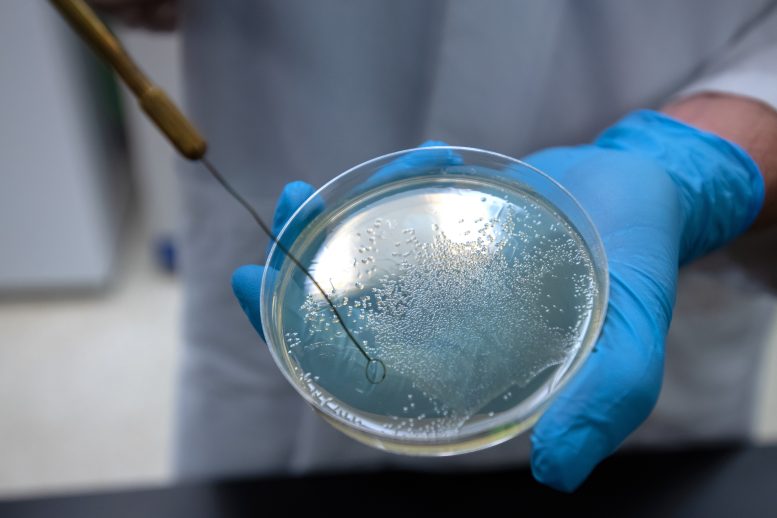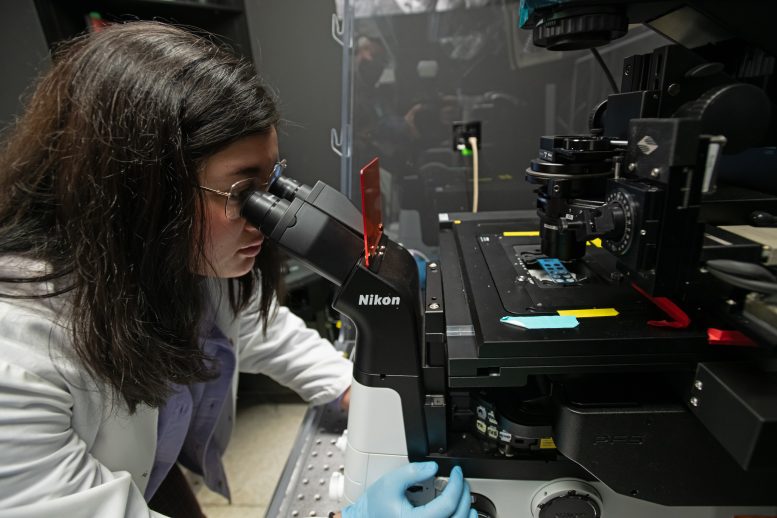Vampire Bacteria? Scientists Uncover Blood-Hunting Behavior in Common Bacteria

Washington State University researchers have identified “bacterial vampirism” in which deadly bacteria feed on human blood serum, providing new insights into blood infections and potential treatments for those at risk. (Artist’s concept.) Credit: SciTechDaily.com
Some of the world’s deadliest bacteria seek out and feed on human blood, a recently discovered phenomenon that researchers call “bacterial vampirism.”
A team led by Washington State University researchers has discovered that bacteria are attracted to the liquid part of blood, or serum, which contains nutrients that bacteria can use as food. One of the chemicals that seemed particularly attracted to bacteria was the amino acid serine.
” data-gt-translate-attributes=”({“attribute”:”data-cmtooltip”, “format”:”html”})” tabindex=”0″ role=”link”>acid found in human blood and is also a common ingredient in protein shakes.
The research result, published in the journal eLifeprovides new information on how blood infections occur and could potentially be treated.

Washington State University researcher Arden Baylink holds a petri dish of salmonella bacteria. Baylink and doctoral student Siena Glenn published research showing that some of the world’s deadliest bacteria seek out and eat serum, the liquid part of human blood, which contains nutrients that bacteria can use as food. Credit: Ted S. Warren, Washington State University College of Veterinary Medicine
Bacteria studied and experimentation
“Bacteria infecting the bloodstream can be deadly,” said Arden Baylink, a professor at WSU’s College of Veterinary Medicine and corresponding author of the research. “We learned that some of the bacteria that most commonly cause blood infections detect a chemical in human blood and swim toward it.”
Baylink and the study’s lead author, WSU Ph.D. student Siena Glenn, discovered that at least three types of bacteria, Salmonella enterica, Escherichia coli and Citrobacter koseri, are attracted to human serum. These bacteria are a leading cause of death in people with inflammatory bowel disease (IBD), approximately 1% of the population. These patients often experience intestinal bleeding which can provide an entry point for bacteria into the bloodstream.

Siena Glenn, PhD at Washington State University. the student uses a high-powered microscope. Glenn, working with Assistant Professor Arden Baylink and colleagues, published research showing that some of the world’s deadliest bacteria seek out and eat the serum, the liquid part of human blood. Credit: Ted S. Warren, Washington State University College of Veterinary Medicine
Using a high-powered microscope system designed by Baylink called the Chemosensory Injection Rig Assay, researchers simulated intestinal bleeding by injecting microscopic amounts of human serum and watching the bacteria move toward the source. The response is quick: it takes less than a minute for the pathogenic bacteria to find the serum.
Potential for new treatments
As part of the study, researchers determined that Salmonella has a special protein receptor called Tsr that allows the bacteria to detect and swim toward serum. Using a technique called protein crystallography, they were able to visualize the atoms of the protein interacting with serine. Scientists believe that serine is one of the chemicals in the blood that bacteria detect and consume.
“By learning how these bacteria are able to detect blood sources, we could in the future develop new drugs that block this ability. These medications could improve the lives and health of people with IBD who are at high risk of blood infections,” Glenn said.
Reference: “Bacterial vampirism Mediated through taxis to serum” by Siena J. Glenn, Zealon Gentry-Lear, Michael Shavlik, Michael J. Harms, Thomas J. Asaki and Arden Baylink, April 16, 2024, eLife.
DOI: 10.7554/eLife.93178.2
The study was funded by the National Institute of Allergy and Infectious Diseases.
News Source : scitechdaily.com
Gn Health





